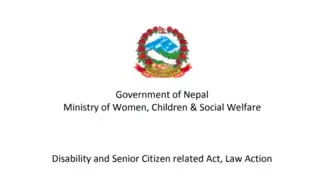World Humanitarian Day is a time to recognize those who face danger and adversity in order to help others. It is also an opportunity to celebrate the spirit that inspires humanitarian work.
Today, millions of people around the world are affected by crises and need humanitarian assistance. Women and girls face especially difficult challenges in these situations. The risk of violence escalates, and their access to health care declines. More than half of all maternal deaths are believed to occur in fragile states and humanitarian settings.
UNFPA works closely with partners to ensure that reproductive health is integrated into emergency responses. UNFPA also deploys hygiene supplies, obstetric and family planning supplies, health personnel, counsellors and other support to vulnerable populations, and works to ensure the needs of women and young people are served through both the emergency and the reconstruction phases.
Nepal is one of the most disaster-prone countries in the world. The 2011 Nepal Disaster Risk Assessment Report shows that 90% of Nepali people are constantly exposed to more than two disasters at any time. The 2008 Koshi floods left more than 50,000 people homeless. Flash floods in Mid-Western Nepal in 2014 resulted in 150 deaths and displaced nearly 30,000 people. The earthquake on 25 April 2015 and its aftershocks claimed nearly 9,000 lives (of which 56% women and girls) and left over 22,000 injured. These disasters were a testimony to the fact that the country is highly vulnerable to disaster risks.
In addition to earthquakes and cyclical floods, Nepal is also experiencing landslides, fires, drought and avalanches. From mid-April 2016 to mid-February 2017 alone, a total of 443 people lost their lives due to various natural calamities across the country. In times of upheaval or natural disasters like the Nepal earthquake 2015, pregnancy-related deaths and gender-based violence (GBV) soar. Many women lose access to essential sexual and reproductive health (SRH) services and give birth in precarious conditions without access to safe delivery services and life-saving care. Young people become more vulnerable to HIV infections and sexual exploitation. Poor reproductive health becomes a significant cause of death. Timely RH services are essential to save lives and reduce morbidity and mortality. Likewise, the protection of women of reproductive age (including pregnant and lactating women), young girls and vulnerable groups from violence and abuse is crucial in an emergency.
Disaster Risk Reduction and Management Act, 2074 (2017) of Nepal that replaced the Natural Calamity Relief Act of 1982 is a key instrument to guide any disaster risk response, risk reduction, preparedness and management interventions in an event of a disaster in the country.


